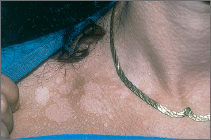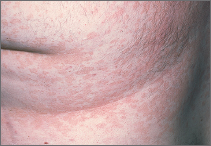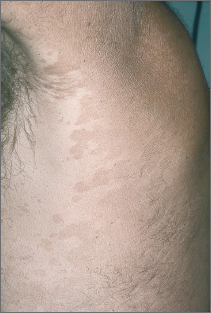Tinea versicolor, also known as pityriasis versicolor, is a very common, harmless, noncontagious yeast infection of the skin.
It's not considered contagious because the yeast is a normal inhabitant of just about everybody's skin.
Tinea versicolor: White
Light or dark spots or patches can be seen scattered on the chest, back, abdomen, and upper arms. The skin discoloration varies from white to pink to red, tan, brown, or even black. A fine, dustlike scale often covers the spots.
People who have tinea versicolor often complain that the involved skin fails to tan in the summer and that sometimes it is a little itchy.
Tinea versicolor becomes more noticeable in the summer because your skin's warmth and moisture help the yeast grow. Also, as the rest of your skin tans in the sun, lighter spots become more noticeable, especially against a background of dark skin.
Tinea versicolor: Faun
Obtain the prescription-strength shampoo or lotion _______________, if you have received a prescription.
Use this medication to form a lather all over, including beyond the affected areas.
Let soak for about 10 minutes and then rinse off in the shower.
After showering and using the prescribed shampoo, use a prescription antifungal cream, lotion, or spray such as _______________, which you also may have received from your health care provider. Apply it to all affected spots. Do this for 3 or 4 weeks, too.
It's also a good idea to repeat this routine before the next warm season or before taking a tropical vacation. (It's a good idea to note this on your calendar.)
To treat stubborn cases, sometimes your health care provider will prescribe an oral antifungal medication such as _______________, which you take for _______ days; however, this does not prevent recurrences.
Tinea versicolor: Tan
Outline



